Choosing the right lighting can completely transform the mood and functionality of your home. With so many options out there, it’s easy to feel a bit overwhelmed. But don’t worry! We’ve got 11 pro tips to help you navigate your way to the perfect lighting for every room, ensuring your spaces are bright, inviting, and just right for whatever you have in mind.
Assess The Functionality Of Each Room
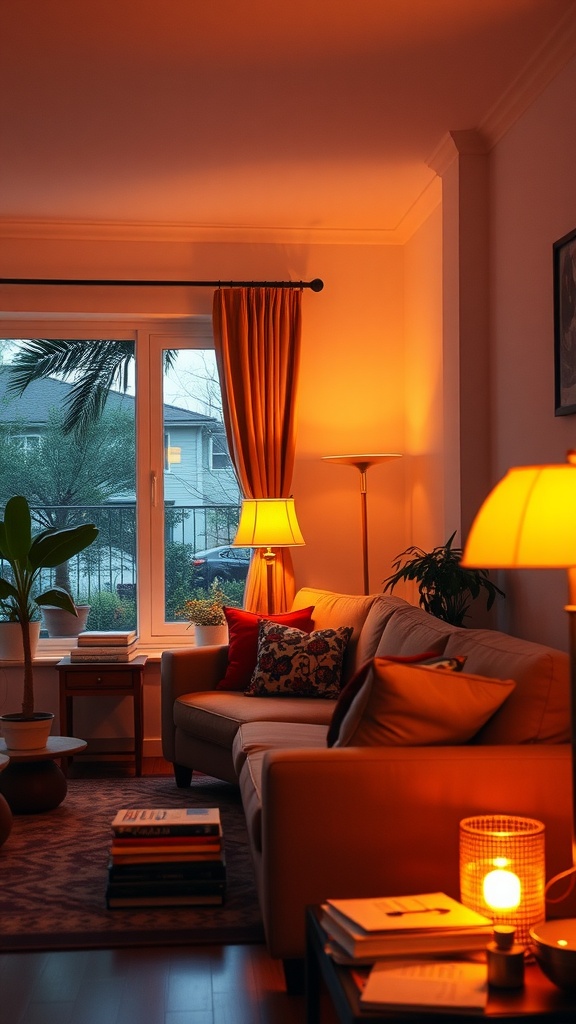
When choosing lighting, it’s essential to consider what each room is used for. This will help you decide on the best lighting solutions. For instance, a cozy living room, like the one depicted in the image, should promote relaxation and comfort.
The warm glow from the lamps creates an inviting atmosphere, making it a perfect spot for unwinding after a long day. Notice how the layered lighting here, with both table and floor lamps, adds depth and warmth to the space. These elements work together to enhance functionality while also setting a pleasant mood.
For spaces like kitchens or home offices, you might want brighter, more focused lighting to help with tasks. In contrast, bedrooms can benefit from softer, more subdued lights to create a calming environment. Understanding how you use a room is one of the key Pro Tips for Choosing the Right Lighting for Each Room.
Layer Different Types Of Lighting
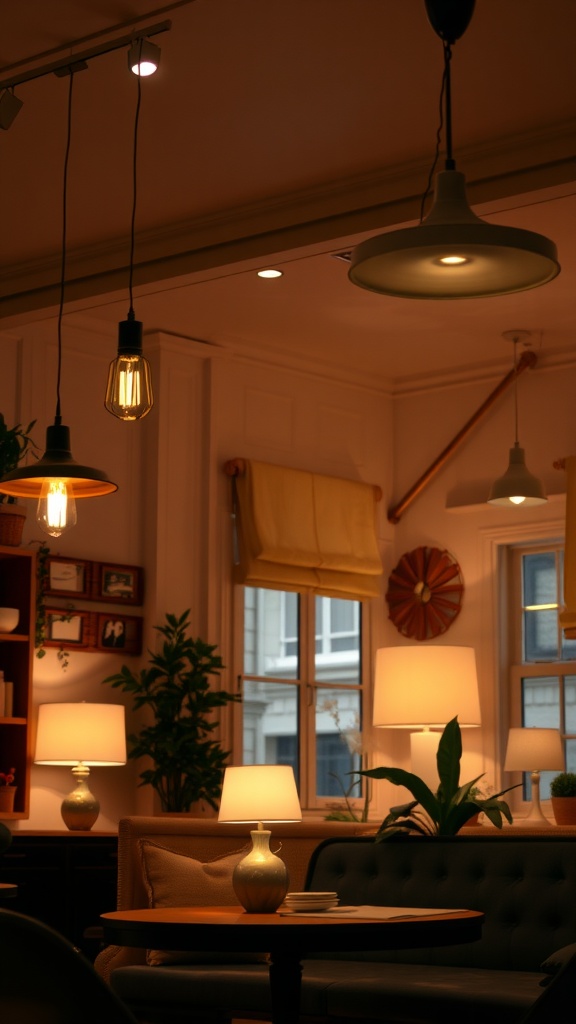
When it comes to lighting a room, layering is key. The image above showcases a cozy setting with multiple light sources. You can see pendant lights, table lamps, and accent lighting all working together to create a warm atmosphere.
This approach provides flexibility. For instance, you can switch on just the table lamps for a relaxed evening or use all the lights for a brighter environment during the day. Each type of light serves a specific purpose. Ambient lighting offers general illumination, while task lighting focuses on specific activities like reading or working.
Incorporating different types of lighting can enhance the overall feel of your space. Think about how to blend these elements seamlessly. Pro Tips for Choosing the Right Lighting for Each Room suggest considering the function of each area. A living room can benefit from softer lights, while a kitchen might need brighter, more functional options.
So, don’t hesitate to mix it up! A well-lit room can be both functional and inviting, making it a place you love to spend time in.
Use Dimmers To Control Ambiance
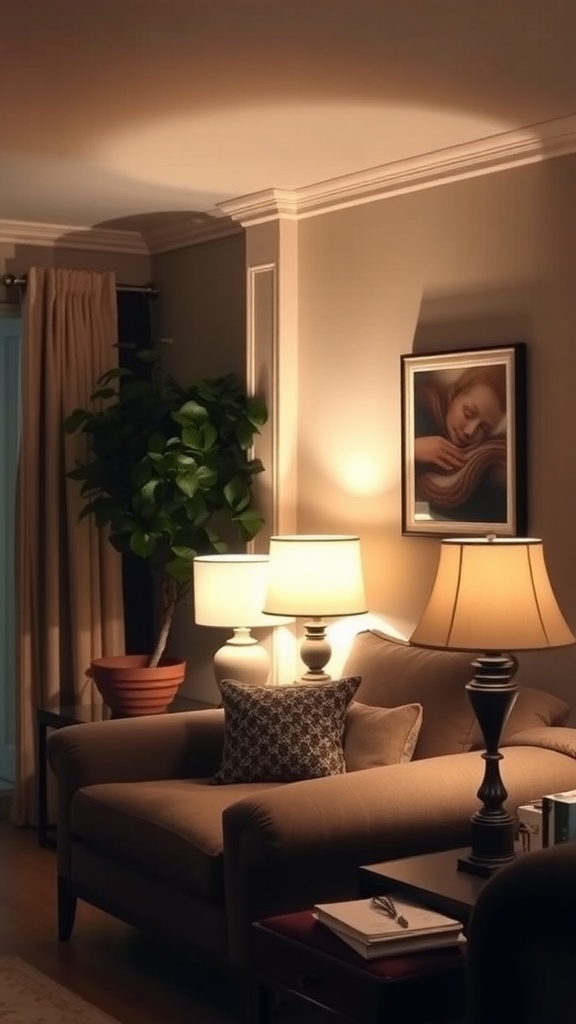
When it comes to setting the mood in a room, lighting plays a crucial role. Picture this cozy living area, illuminated softly by two lamps. The warm glow creates an inviting atmosphere that makes you want to sink into that comfy couch.
Dimmers are a fantastic addition to any room. They allow you to adjust the brightness according to the time of day or activity. Whether you’re hosting a lively gathering or enjoying a quiet evening with a book, being able to control your light levels can really enhance the experience.
In this image, you can see how the dim lamps contribute to a soothing ambiance. The shadows add depth, while the soft lighting highlights the artwork and greenery. This kind of setup makes it easier to relax after a long day.
So, when considering Pro Tips for Choosing the Right Lighting for Each Room, remember that dimmers can make all the difference. They help create spaces that feel just right.
Match The Lighting To The Room’S Purpose
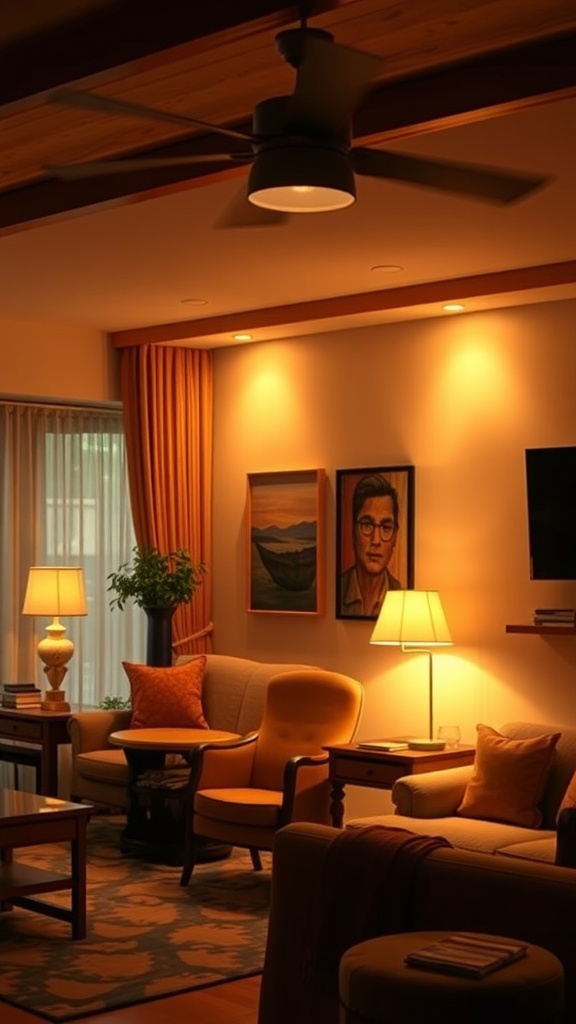
Lighting plays a crucial role in how we feel and function in a space. In the image above, we see a cozy living room bathed in warm tones. The soft lighting from the lamps and the recessed ceiling lights creates a welcoming atmosphere, perfect for relaxing or entertaining.
When choosing lighting for your rooms, think about what each space is used for. A living room, like the one shown, benefits from warm, inviting light that encourages conversation. This is different from a workspace, where bright, focused lighting can help keep you alert and productive.
Another pro tip is to consider the intensity of your lighting. In the image, softer lighting is complemented by the natural light coming through the curtains, balancing the ambiance. For areas like kitchens or bathrooms, brighter lights are often preferable to ensure safety and functionality.
Don’t forget about layering your lighting. The combination of overhead lights, table lamps, and even accent lights creates depth and interest in a room. For instance, in the picture, the floor lamp adds a nice touch to the overall design while providing additional light for reading or activities.
Remember, the goal is to enhance the room’s purpose with your lighting choices. By following these pro tips for choosing the right lighting for each room, you can create spaces that are not only functional but also feel just right.
Pay Attention To Bulb Brightness And Color Temperature
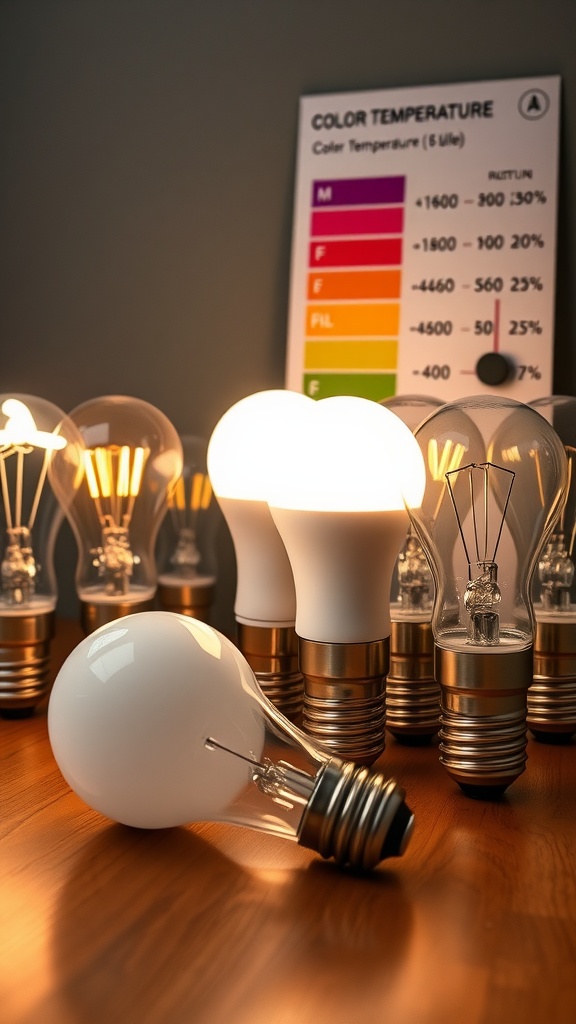
When it comes to lighting your space, understanding bulb brightness and color temperature is crucial. The image above showcases various light bulbs alongside a color temperature chart, making it easier to grasp these concepts.
First off, bulb brightness is typically measured in lumens. The more lumens a bulb has, the brighter it will be. For instance, if you want a cozy atmosphere in your living room, you might opt for bulbs with lower lumens. On the other hand, workspaces like kitchens or home offices benefit from brighter bulbs.
Now, let’s talk about color temperature. This is measured in Kelvin (K) and ranges from warm yellow hues to cool blue tones. Lower Kelvin numbers (around 2700K) create a warm, inviting glow. This is perfect for bedrooms or dining areas. Higher Kelvin numbers (5000K and above) give off a cooler, more energizing light, ideal for task-oriented spaces.
Understanding these aspects can significantly affect how a room feels. So, remember these pro tips for choosing the right lighting for each room. It’s all about creating the right mood and functionality!
Consider Natural Light Sources
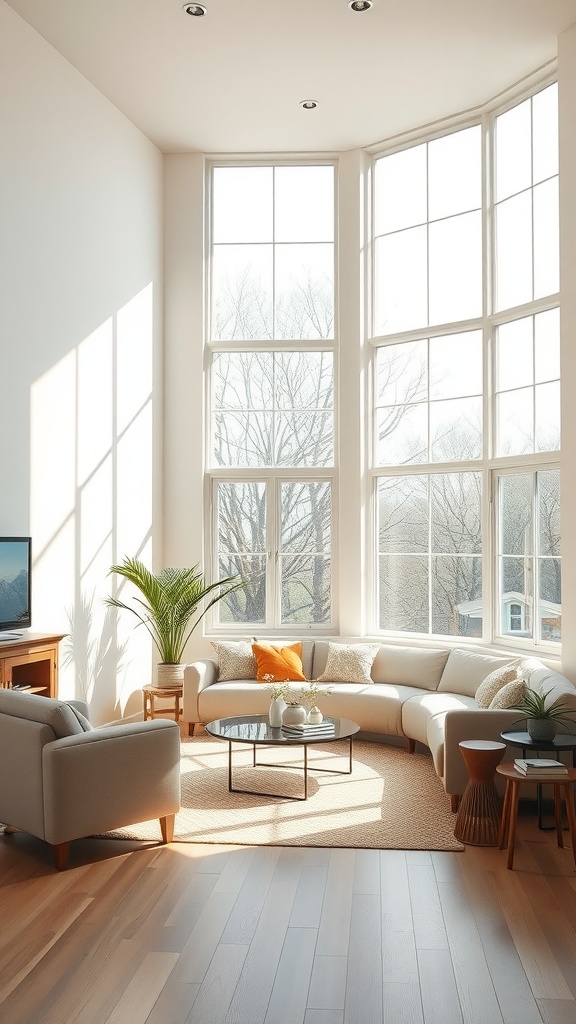
When choosing the right lighting for each room, don’t forget to consider the natural light sources available. The image showcases a bright living room filled with sunlight from large windows. This makes the space feel open and inviting.
Natural light not only enhances the atmosphere, but it can also influence how you select artificial lighting. For instance, in areas flooded with sunlight, you might opt for softer, warmer bulbs to balance the brightness. In contrast, darker rooms may need brighter, cooler lights to create a well-lit environment.
Notice how the furniture arrangement in the image takes advantage of the natural light. Positioning the seating to face the windows allows everyone to enjoy the view and the warmth of the sun. This is a valuable tip when thinking about how to illuminate your space.
Remember, the direction and intensity of natural light can change throughout the day and across seasons. Take some time to observe how these changes impact the room before making your lighting decisions. These insights can help guide you in your quest for the right lighting solutions, aligning perfectly with our Pro Tips for Choosing the Right Lighting for Each Room.
Highlight Key Features With Accent Lighting
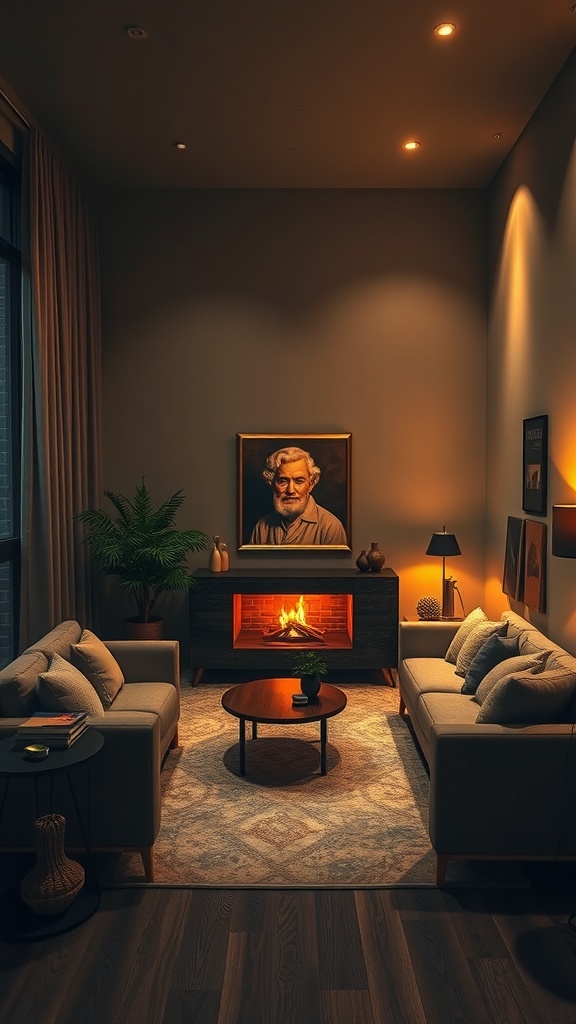
Accent lighting is a fantastic way to bring out the best features of your room. In the image, you can see how the soft, warm lights focus on the artwork and the fireplace. This creates a cozy atmosphere while drawing your eyes to these key elements.
When considering tips for choosing the right lighting for each room, think about what you want to highlight. Whether it’s a painting, a piece of furniture, or even a plant, directing light towards these items can dramatically change the room’s vibe.
Using lamps or adjustable spotlights can be an effective approach. In the image, the table lamp and the recessed lights work together to create depth and interest. Try mixing different types of lights to see what works best for your space.
Remember, accent lighting should complement your main lighting, not overpower it. Balancing these layers will ensure your room feels inviting and well-designed.
Choose The Right Fixtures For Each Space
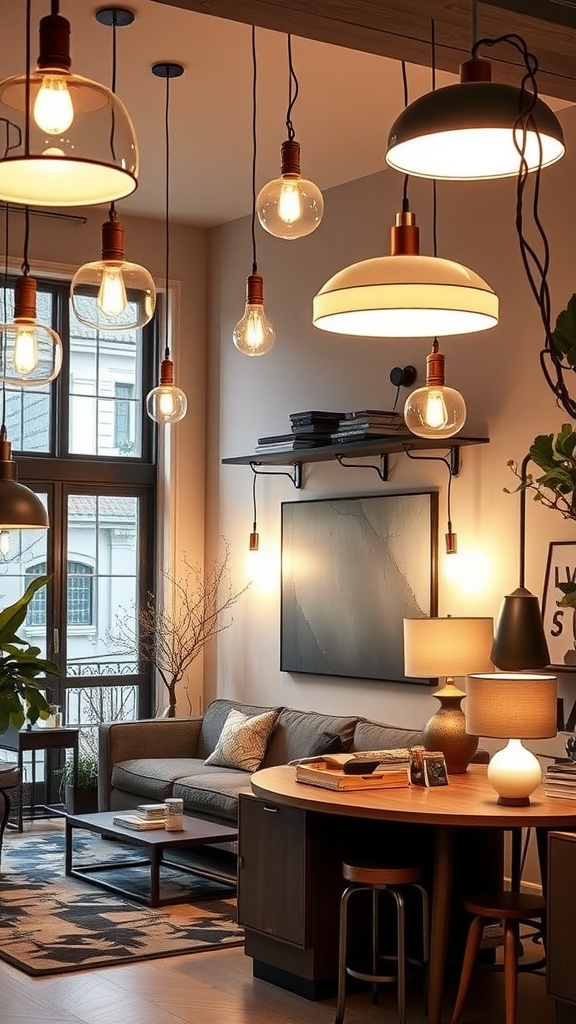
Choosing the right lighting fixtures is key to enhancing the vibe of your space. Take a look at this cozy room, where various light sources work harmoniously to create a welcoming atmosphere. Notice how the combination of pendant lights and table lamps provides both functional and ambient lighting.
Each fixture serves a purpose. The hanging lights above the dining area draw attention while offering bright light for meals or gatherings. Meanwhile, the table lamp by the couch offers soft lighting, perfect for reading or relaxing. This balance is essential in any room.
When picking fixtures, consider the size and layout of your space. Larger rooms can benefit from multiple light sources, like those seen here. Smaller spaces might need more streamlined options to avoid a cluttered feel. Also, think about the style. The mix of modern and rustic elements in this image shows how different designs can blend together to create a unique look.
Remember, these are just a few pro tips for choosing the right lighting for each room. Focus on how fixtures interact with furniture and decor, and you’ll enhance the overall feel of your home.
Adapt Lighting To Room Size And Ceiling Height
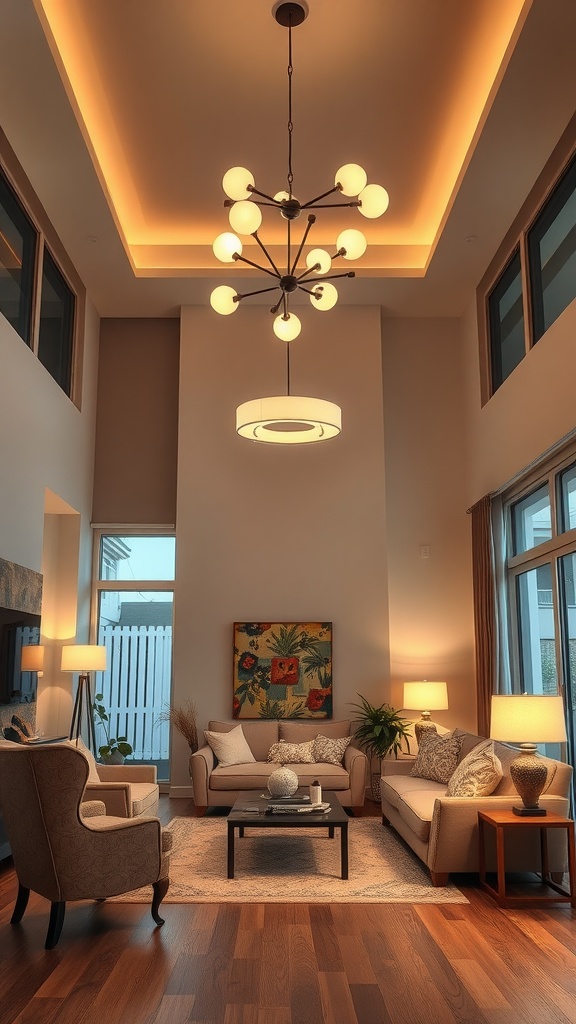
Choosing the right lighting for any space can really set the mood and enhance the overall feel of the room. When it comes to adapting lighting to the size of the room and the height of the ceiling, there are a few things to keep in mind.
In the image, we see a spacious living room with high ceilings, which offers a perfect opportunity for bold lighting choices. Notice the stylish chandelier hanging down. This type of fixture works well in larger rooms because it draws the eye upward, creating a sense of elegance and openness.
For smaller rooms, consider using wall sconces or recessed lighting. These options can help save space and maintain a cozy atmosphere. The key is to distribute light evenly without overwhelming the room.
Additionally, think about the color temperature of the bulbs. Warmer tones can make a room feel inviting, while cooler tones can add a more modern touch. In the image, the warm glow from the fixtures enhances the inviting nature of the space.
Overall, adapting your lighting to fit both the size of the room and the height of the ceiling is essential. Following these pro tips for choosing the right lighting for each room will help you create the perfect ambiance for your home.
Use Task Lighting Where Needed
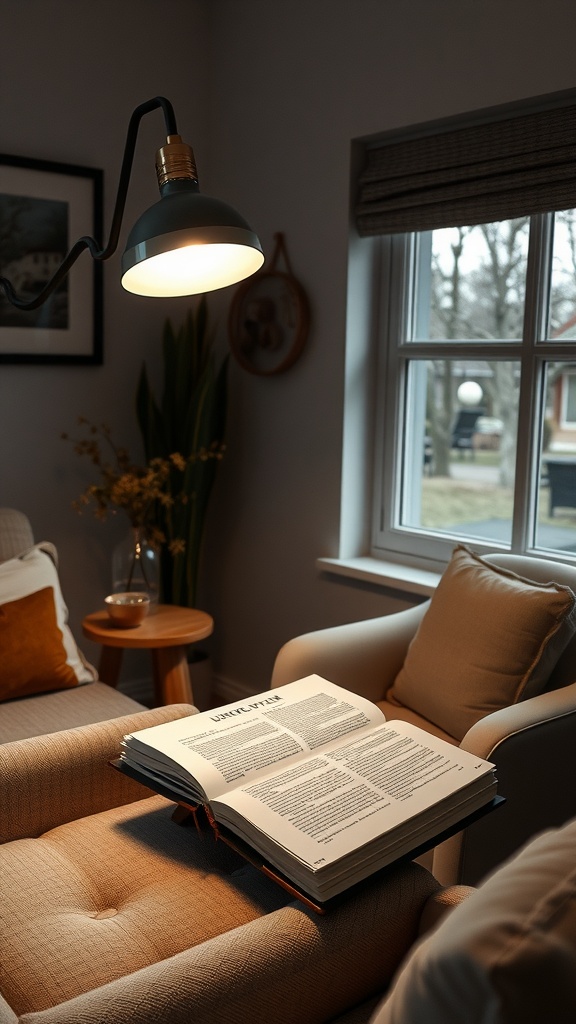
When it comes to lighting your home, understanding the role of task lighting is key. Task lighting helps illuminate specific areas where you perform activities, like reading or cooking. The image beautifully illustrates this concept with a cozy reading nook, complete with a stylish lamp casting warm light over an open book.
This setup is a perfect example of how task lighting can create a welcoming atmosphere. The lamp, gently arched above the book, ensures that the pages are easy to read without straining your eyes. This is a great reminder that Pro Tips for Choosing the Right Lighting for Each Room should always include consideration for how you use the space.
In your own home, think about where you need focused light. Perhaps you need a bright light over your kitchen counter for meal prep, or a soft glow by your bedside for reading. Each space has its own needs, and task lighting can help meet those effectively.
Blend Style And Practicality For Consistent Aesthetic
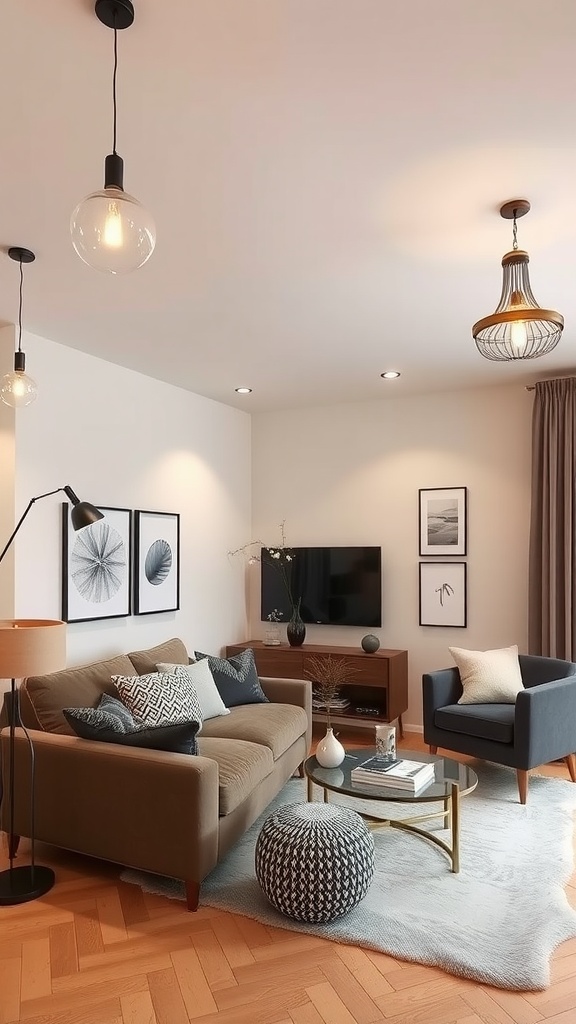
When you’re looking to brighten up your space, it’s important to consider both style and practicality. The image shows a cozy living room with a mix of pendant and recessed lighting. This blend creates a warm and inviting atmosphere, perfect for relaxing or entertaining.
The choice of lighting fixtures here is not just about bringing light; it also enhances the room’s decor. The pendant lights add a touch of elegance, while the simple bulbs provide a modern feel. This combination can be a fantastic example of Pro Tips for Choosing the Right Lighting for Each Room.
Think about how different fixtures can complement your furniture and colors. The earthy tones of the couch and the decor here create a harmonious vibe. By selecting lighting that ties into your overall design, you maintain a consistent aesthetic throughout the room.
Also, consider the functionality of your lighting. In this setup, the fixtures not only look good but also provide adequate light for activities like reading or watching TV. Blending style with practicality ensures that your space is both beautiful and useful.
